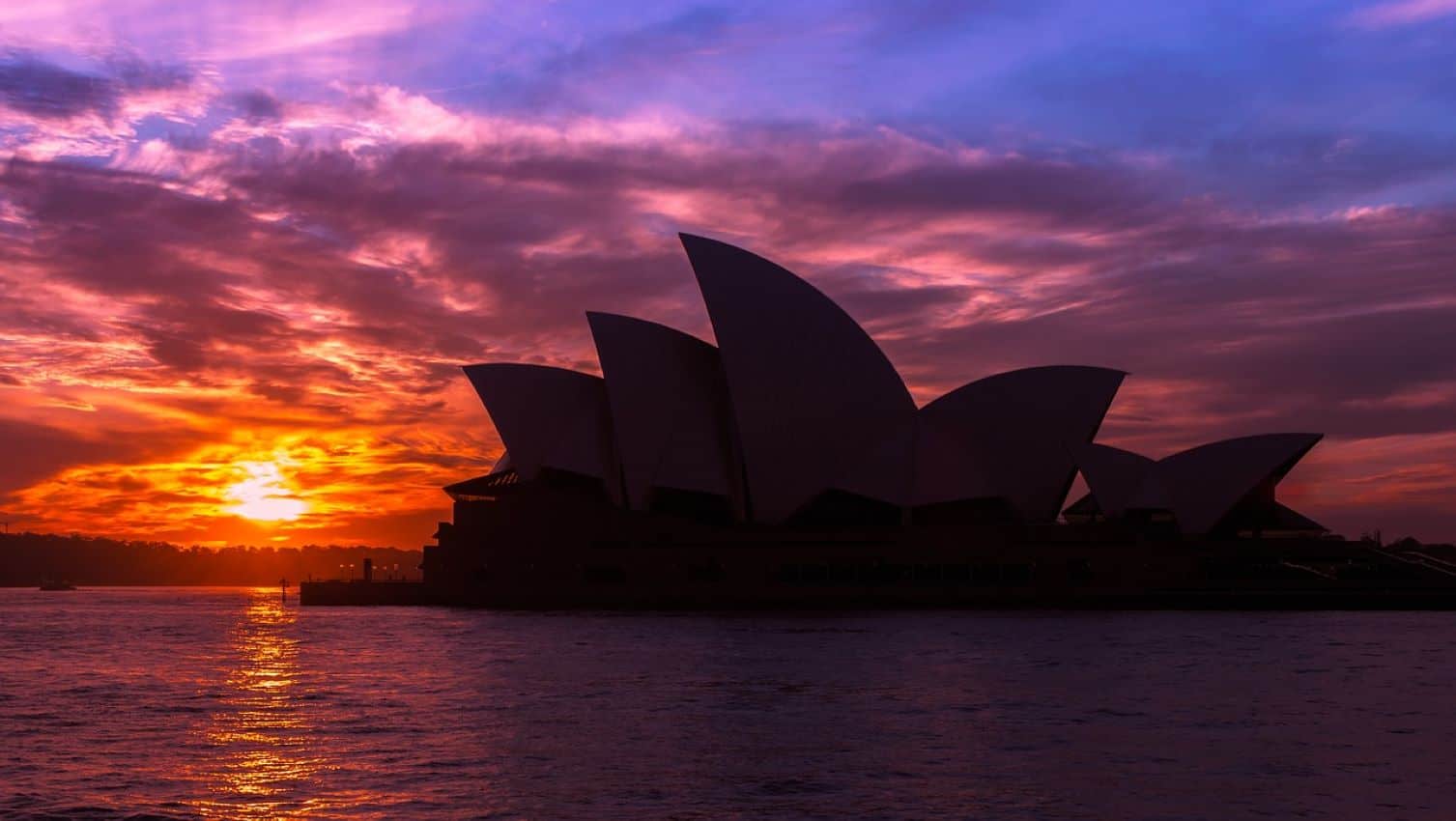

The sun rises over Australia's iconic Sydney Opera House. (Image by RobertDychto from Pixabay)
Migrating to Australia is a dream realised by thousands from across the world. And for good reason: the rich culture, the laidback lifestyle, its low population density, and all the beautiful beaches and other world-famous natural attractions—the list goes on.
The coronavirus crisis has slammed the breaks on Australia’s immigration program for now, sure. Since March, the country has gone from welcoming over half a million new residents a year to practically zero. The borders are shut. Aussies themselves are even banned from leaving the country without an exceptional reason.
But there is light on the southern horizon. Australia has been one the most successful countries in the world at suppressing the Covid-19 pandemic – there were only 104 deaths by the end of June 2020. Local lockdown measures are rapidly easing and the economy is slowly coming back to life.
It is expected that by mid-2020, the economy – and crucially, international travel travel – will be back in full swing. And so will the Lucky Country’s hunger for migrants as it rebuilds, post-pandemic.
It can take over six months to apply for visa to live and work in Australia. So despite the present border closures, you may want to start your research and planning now. And given the state so many other countries around the world will likely still find themselves in, demand for migrating to Australia is likely to be extremely high when the country does reopen.
To help you decide about making the big move Down Under, here are a few big pluses you might want to consider:
Due to its longstanding, nation-building immigration program, Australia is truly multi-cultural. 43% of Australians were either born abroad or have a parent to was born abroad, which contributes to the diverse cultural practices across the country. You’ll fit right in!
On the whole, Australia’s weather is fantastic. The typical summer is from December to February, autumn is from March to May, winter happens from June to August, and spring is from September to November. This pattern of seasons can vary, however, depending on where in Australia you are. It’s a big place after all. For example, Brisbane is sub-tropical with scorching summers ending in monsoons followed by gloriously warm winters. Meanwhile, 2000 kilometres further south is Melbourne which is famous for its “four seasons in one day”.
The sun can get particularly harsh in Australia. Did you know that Aussies have the highest incidences of skin cancer in the world? You better be prepared to slap on a lot of sunscreen. But yes, the beaches are to die for; and just in case you haven’t heard, there are quite a lot of them.
Australian spelling is closer to British spelling than American, and the accents are far different than both. You need to spend quite a lot of time with the locals to get the hang of the English spoken here. The most difficult thing about migrating to Australia might getting your mouth around the local slang and jargon, but it’s great fun.
Did you know that Australia loves its local coffee so much that at one point Starbucks was forced to shut down 70% of its operations in the country due to its fierce competition from the local industry? That’s how important coffee is in Australian culture.
Aussies also love their booze, of course. You’ll be hard-pressed to find a commercial street that doesn’t have a liquor store or two, and drinks are often offered to go with every meal. Australia is also chock-full of local distilleries and brewed beers.
Customs like tipping your servers and waiters at a restaurant aren’t followed in Australia, though. When in doubt, ask a local.
Usually, there abundant job opportunities for people migrating to Australia, and several kinds of visas. The most common are those for, business, student, work, and permanent residency.
Processing can take anywhere between 6 and 8 months, depending on the kind of visa. Make sure to allocate enough time to avoid disappointments. Having a third party, such as a sponsor, communicate with the embassy may help speed up the process.
Making that big move to Australia can be daunting, but with proper research and preparation, you’ll find yourself very much at home Down Under in no time at all.